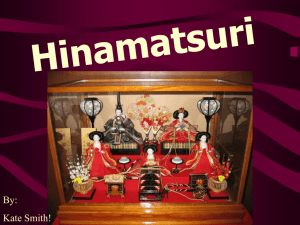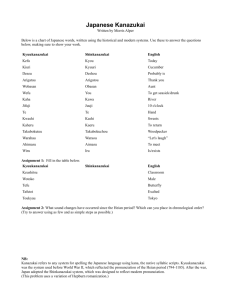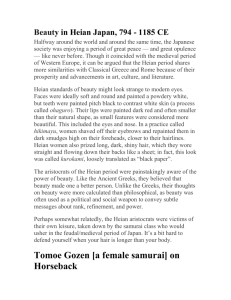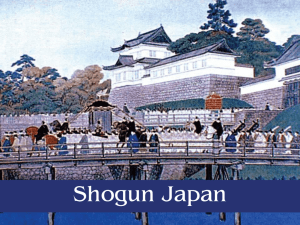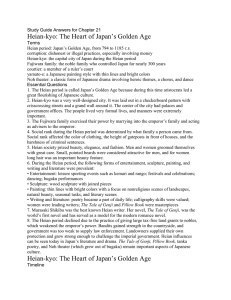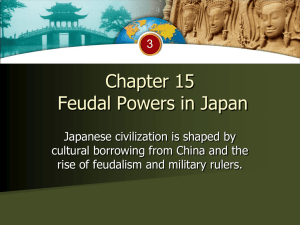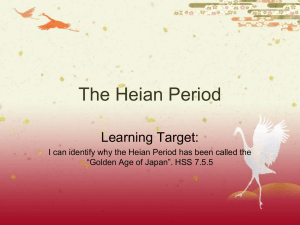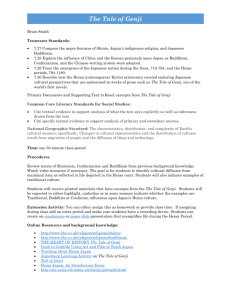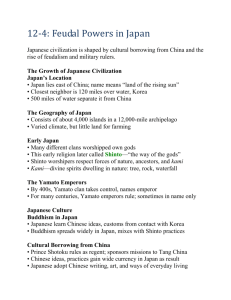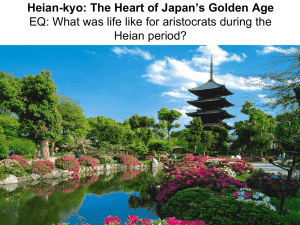The Arts and Culture of The Heian Period
advertisement
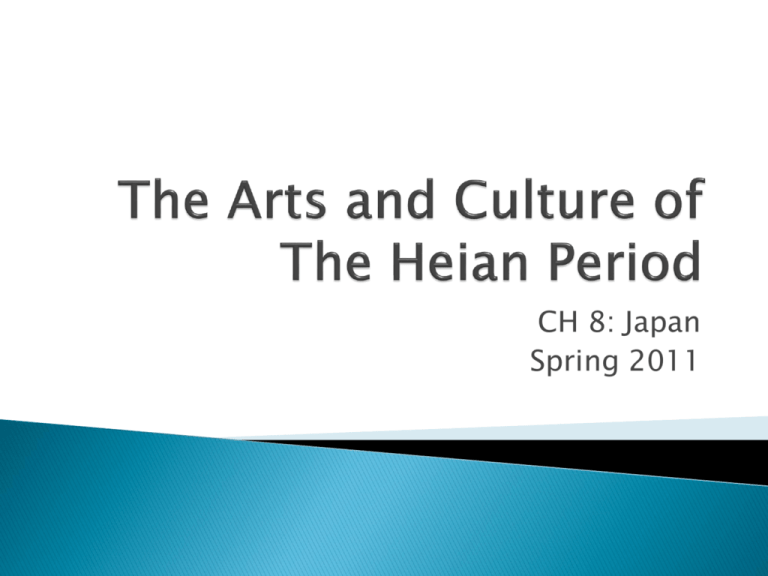
CH 8: Japan Spring 2011 The most popular known literature from this time is The Tale of Genji, which was written by Lady Murasaki Shikibu. Most of the literature and poetry was written by women. Poetry at this time usually only had five lines, and had a specific structure. Most were about love or nature. It was the day of the serpent, the first such day in the Third Month. "The day when a man who has worries goes down and washes them away," siad one of his men, admirably informed, it would seem, in all the annual observances. Wishing to have a look at the seashore, Genji set forth. Plain, rough curtains were strung up among the trees, and a soothsayer who was doing the circuit of the province was summoned to perform the lustration. Genji thought he could see something of himself in the rather large doll being cast off to sea, bearing away sins and tribulations. "Cast away to drift on an alien vastness, I grieve for more than a doll cast out to sea." (245) What does this sample of literature tell us about Japanese writing? I feel the life is / sorrowful and unbearable / though / I can't flee away / since I am not a bird. During the Heian Period, physical appearance was greatly prized. Both men and women wore very complicated robes and makeup. Robes were made of silk, and could have up to 12 layers. During that time, standards of beauty was also different… Different cultures have varied standards for female beauty. Some societies prefer women with stretched lower lips, or facial tattoos, or brass rings around their elongated necks. In Heian-era Japan, a beautiful woman had to have incredibly long hair, layer after layer of silk robes, and an intriguing make-up routine. Heian Era Hair The women of the imperial court in Heian Japan grew their hair as long as possible. They wore it straight down their backs, a shining sheet of black tresses (called kurokami). This fashion began as a reaction against imported Chinese fashions, which were much shorter and included pony-tails or buns. The record-holder among Heian hair-growers, according to tradition, was a woman with hair 7 meters (23 feet) long! Beautiful Faces and Makeup The typical Heian beauty was required to have a pouty mouth, narrow eyes, a thin nose, and round apple-cheeks. Women used a heavy rice powder to paint their faces and necks white. They also drew bright red rose-bud lips on over their natural lip-lines. In a fashion that looks very odd to modern sensibilities, Japanese aristocratic women of this era shaved off their eyebrows. Then, they painted on misty new eyebrows high on their foreheads, almost at the hair-line. They achieved this effect by dipping their thumbs into black powder, and then smudging them onto their foreheads. Another feature that seems unattractive now was the fashion for blackened teeth. Because they used to whiten their skin, natural teeth ended up looking yellow in comparison. Therefore, Heian women painted their teeth black. Blackened teeth were supposed to be more attractive than yellow ones, and they also matched the women's black hair. The final aspect of a Heian-era beauty's preparations consisted of piling on the silk robes. This style of dress is called juni-hito, or "twelve layers," but some upper class women wore as many as forty layers of unlined silk. For the nobles of Heian Japan, how something was written was just as important as the actual content. People might spend hours just writing a few characters to ensure their beauty. Much of Heian Architecture was copied from other parts of the world, specifically China and their capital city of Chang’an. Buildings had wooden frames that were curved upwards at the ends. Most houses were simple, airy designs, and were surrounded with plants and gardens. Visual arts during the Heian period used bold colors and mostly describes scenes from books or poems. Many paintings were on doors and furniture rather than paper. Performing arts were (and still are very popular in Japan. During the Heian period, people gathered in large numbers to watch jugglers, acrobats, and musicians. There performances were often wild. In the later Heian, a new type of drama, called Noh, was developed. These plays were usually about great heroes or events from Japan’s past. Zen Buddhism also became popular during this time. Zen Buddhism focused on deep meditation and self-discipline. This appealed to Japan’s warrior class. Pure Land Buddhism appealed to the poor of Japan. More mainstream Buddhism appealed to the rich because of the elaborate rituals.
